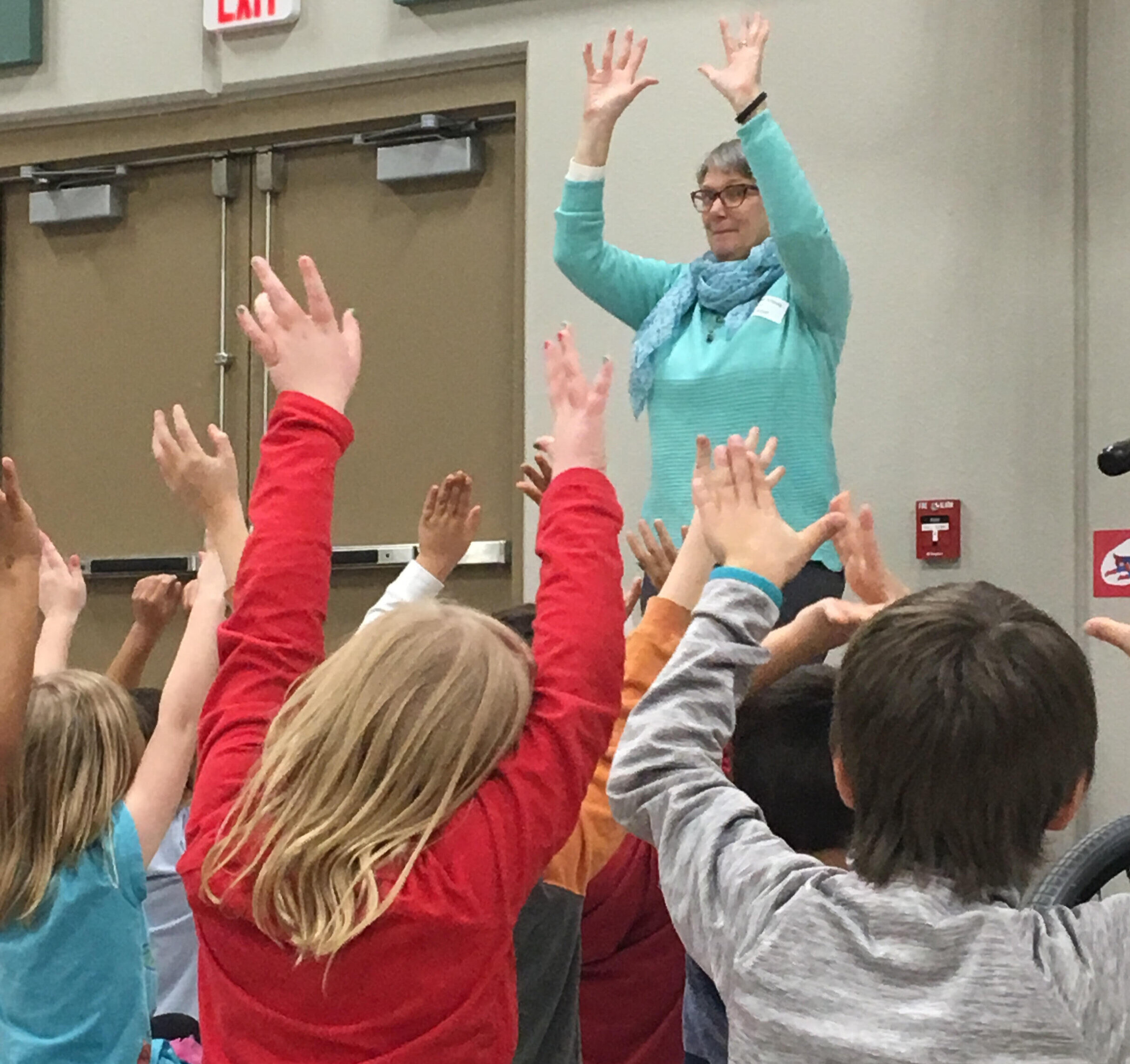Empathy and storytelling
/This was on the wall at a school I visited just before the pandemic shut everything down in 2020.
I was listening to George Lakoff’s podcast Framelabs, when I heard him say, “Empathy is the heart of democracy.” His podcast partner asked how we bring more empathy into our world. Lakoff said, “We have to do it from a societal level.” My first thought was, “Hmmph. That’s no answer at all.”
My next thought was, “Oh…wait, that IS my job. We have to start with the children.” More and more, I feel compelled to tell stories that promote kindness, compassion and courage.
I was going to write here about the science of empathy, how stories act on the brain, all the stuff about cortisol and oxytocin, what researchers have discovered, etc.. All useful to google and read about, but I’d rather tell you why telling stories to build empathy seems of paramount importance to me right now.
I want to live in a world where people care about each other, where we look out for those who need help, where we don’t say, “well, those people should just pull themselves up by their bootstraps.” I want children to understand that helping others—and helping the earth—is not weakness but strength. I want my presence, my stories, and yes, my puppets, to say to children, “You matter. I see you. I care. We are in this together.”
So I tell a story about a kind mole who helps a lost sparrow. We sing “I love the mountains”. I tell a story about a girl who invites everybody to her birthday party.and another about a horse who goes looking for another horse to be his friend. I model kindness when my rainbow sloth puppet Hairy is scared to meet the children. I also build in places in stories where we all take a deep breath. We sing “Poor little bug on the wall” to let all our emotions out, including those that are deemed unacceptable. Sometimes I tell funny stories, so we can all laugh together. We stretch our emotional muscles.
Not every story or song I do is about kindness, but many are. I hope they stick.
Does this resonate with you? What are some of your favorite stories or songs that build empathy?






































